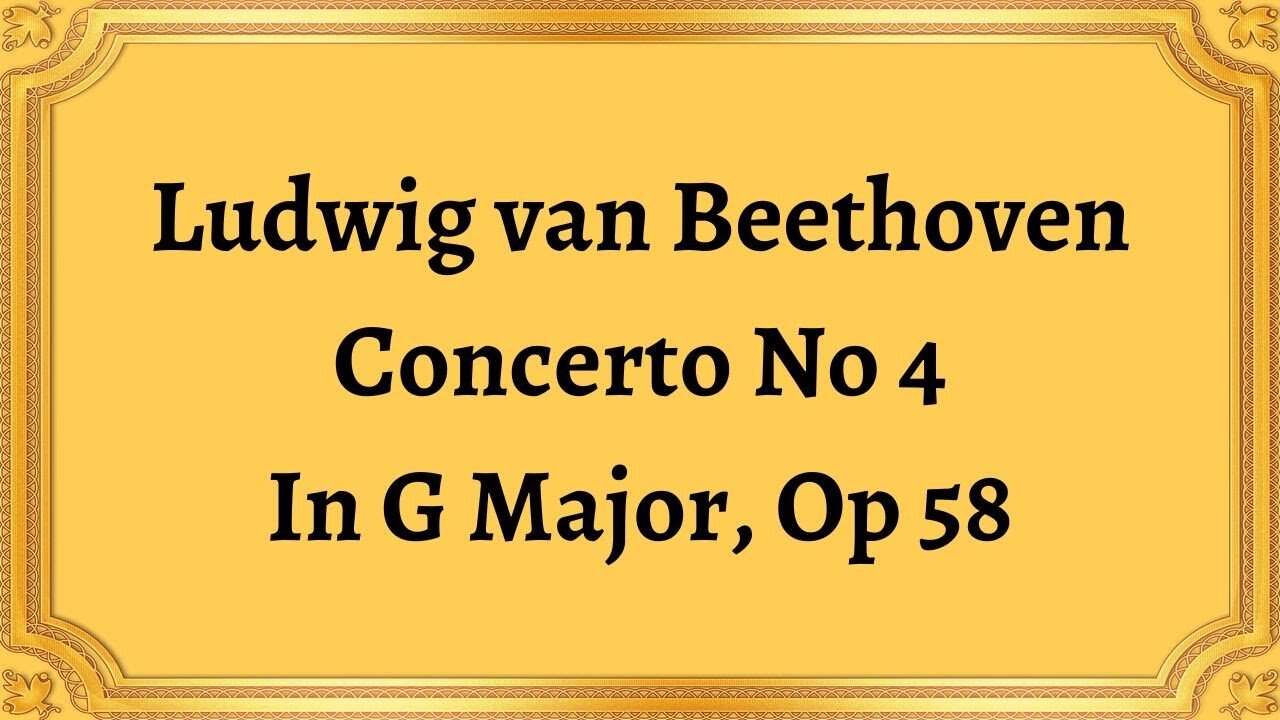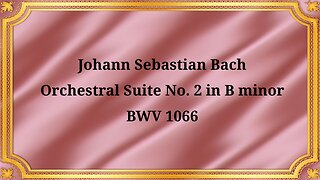Premium Only Content

Ludwig van Beethoven Concerto No 4 In G Major, Op 58
#LudwigvanBeethoven #ConcertoNo4inGMajorOp58 #classicalmusic #musiccomposition #piano #orchestra #breakthrough #innovation #orchestration #virtuoso #Romanticera #Beethovenconcerto #classicalconcerto #pianomusic #orchestralmusic #violinconcerto #crossovergenre #classicalmusician #classicalpiano.
Publication date 1950
Arthur Rubinstein;
The Royal Philharmonic Orchestra; Sir Thomas Beecham
Ludwig van Beethoven's Concerto No. 4 in G Major, Op. 58 is a masterful work of classical music that embodies the genius of one of the greatest composers of all time. Completed in 1806, this concerto is considered one of Beethoven's middle-period works and features a unique combination of piano and orchestra.
The first movement, marked "Allegro Moderato," begins with a gentle and lyrical piano introduction before the orchestra enters with a vibrant and energetic theme. This movement showcases Beethoven's skill in balancing the contrasting elements of his compositions and creates an atmosphere of tension and release.
The second movement, marked "Andante con moto," is a beautiful and introspective piece that features a simple and elegant piano melody accompanied by a rich and delicate orchestration. This movement is characterized by its serenity and poignant beauty, conjuring up images of a peaceful and tranquil landscape.
The third movement, marked "Rondo. Vivace," is a lively and spirited piece that features a playful and upbeat piano melody. This movement is a true testament to Beethoven's mastery of orchestration, with its use of engaging rhythms and energetic counterpoint creating a sense of movement and urgency.
Throughout the concerto, Beethoven uses melodies and harmonies that are both innovative and expressive. He pushes beyond the conventions of the classical period and creates a soundscape that foreshadows the Romantic era.
One of the most notable features of this concerto is its use of the piano. Beethoven was a virtuoso pianist himself, and his writing for the instrument is both challenging and rewarding for the performer. The piano part weaves seamlessly in and out of the orchestral texture, at times blending in and at other times standing out in vibrant and breathtaking solos.
In essence, Beethoven's Concerto No. 4 in G Major, Op. 58 is a masterpiece of classical music that combines thrilling orchestration, expressive melodies, and innovative use of the piano. It is a testament to the brilliance of one of the greatest composers in history and an enduring piece that continues to inspire classical music lovers all over the world today.
You have the opportunity to support the channel https://destream.net/live/RadSiarAl/donate
-
 20:26
20:26
Classical music_Music Inspiration
1 month agoJohann Sebastian Bach Orchestral Suite No. 2 in B minor, BWV 1066
862 -
 LIVE
LIVE
LFA TV
14 hours agoLFA TV ALL DAY STREAM - TUESDAY 7/29/25
4,614 watching -
 LIVE
LIVE
Bannons War Room
5 months agoWarRoom Live
17,653 watching -
 8:36
8:36
Warren Smith - Secret Scholar Society
1 day agoTikTok's Biggest Political Star Goes Too Far & Blows Up His Own Career
7.59K10 -
 56:42
56:42
VSiNLive
1 hour ago $0.65 earnedA Numbers Game with Gill Alexander | Hour 1
7.99K -
 LIVE
LIVE
The Big Mig™
4 hours agoAct Blue, Magic Mortgage Money Laundering Scheme
5,106 watching -
 2:03:57
2:03:57
Matt Kohrs
11 hours agoMARKET OPEN: Stocks Rocket, Trade War News & Earnings Season || Live Trading
24.5K2 -
 1:25:02
1:25:02
Dear America
3 hours agoHere’s EVERYTHING We Know About The “White” NYC Shooter… + Trump Secures MAJOR Deal With EU!!
140K102 -
 LIVE
LIVE
Badlands Media
5 hours agoBadlands Daily: July 29, 2025
3,884 watching -
 1:01:27
1:01:27
Part Of The Problem
13 hours agoDave Smith | The System is Broken | Part Of The Problem 1290
18.6K10